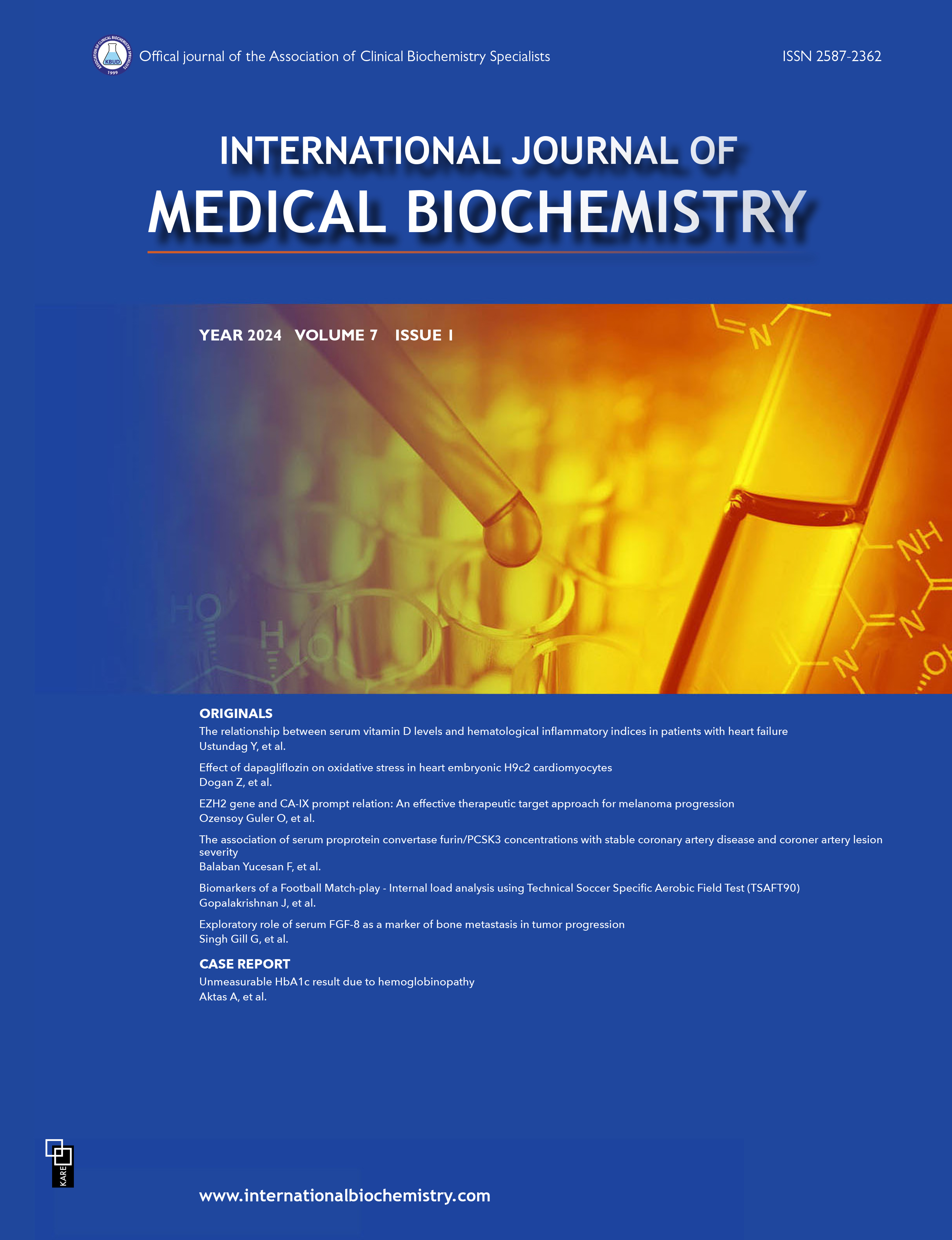Comparison of oxidative stress parameters in patients with prediabetes and type 2 diabetes mellitus: A preliminary study
Çiğdem Yücel1, Esin Çalcı1, Andaç Onur1, Esra Fırat Oğuz1, İhsan Ateş2, Turan Turhan11Department of Clinical Biochemistry, Ankara Numune Training and Research Hospital, Ankara, Turkey2Department of Internal Medicine, Ankara Numune Training and Research Hospital, Ankara, Turkey
INTRODUCTION: Type 2 diabetes mellitus (T2DM), also known as adult-onset diabetes, is caused by insulin resistance or insufficient insulin production. Impaired glucose tolerance (IGT) and impaired fasting glucose (IFG) indicate blood glucose levels that are higher than normal but not enough to be diagnosed as diabetes. An oral glucose tolerance test (OGTT) and the fasting blood glucose (FBG) level, respectively, are used to determine these 2 prediabetic groups. Oxidative stress is the common pathogenic factor leading to insulin resistance, β-cell dysfunction, IGT, and ultimately to T2DM. This study is an evaluation of the concentration of antioxidant and oxidant parameters of total oxidative status (TOS) and total antioxidant status (TAS) as well as paraoxonase-1 (PON1), and ischemia-modified albumin (IMA) in diabetic and prediabetic patients, and a normoglycemic control group.
METHODS: Serum TAS, TOS, PON1, IMA were measured in a total of 117 prediabetic, diabetic, and normoglycemic individuals.
RESULTS: The TAS was lower in the IGT patient group (2.41±0.2 mmol Trolox Eqv/L) than in the IFG group (2.52±0.18 mmol Trolox Eqv/L) and the normoglycemic control group (2.52±0.18 mmol Trolox Eqv/L) (p=0.03 and p=0.006, respectively). The serum IMA level was found to be significantly different between the T2DM patients (0.70±0.11 ABSU) and the IGT patients (0.77±0.14 ABSU) (p=0.045). There was also a significiant difference in the IMA level between the IGT patients (0.77±0.14 ABSU) and the IFG patients (0.68±0.13 ABSU) (p=0.037).
DISCUSSION AND CONCLUSION: The high IMA and low TAS levels in the IGT patient group may have been a result of the high-glucose solution administered in the OGTT causing an increase in reactive oxygen species synthesis. TAS synthesis may not be sufficient to compensate for this rapid increase in blood glucose.
Corresponding Author: Andaç Onur, Türkiye
Manuscript Language: English



















